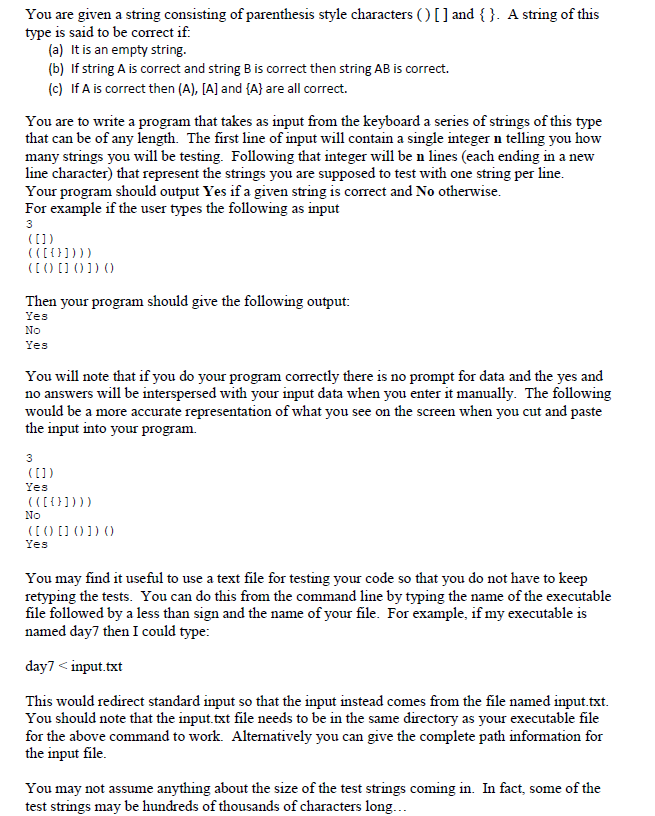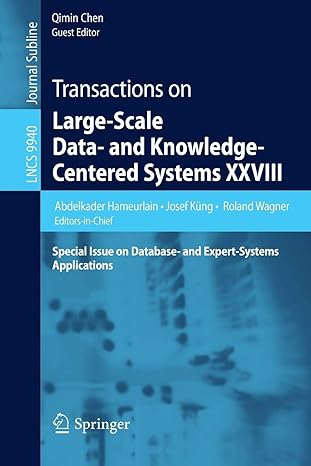Question
Write in C language. Must answer using template code given below: main.c #include #include #include stack.h int main(int argc, char* argv[]) { STACK hStack; int

Write in C language. Must answer using template code given below:
main.c
#include
#include
#include "stack.h"
int main(int argc, char* argv[])
{
STACK hStack;
int i;
hStack = stack_init_default();
for (i = 0; i
{
stack_push(hStack, i);
}
while (!stack_empty(hStack))
{
printf("top of the stack %d ", stack_top(hStack, NULL));
stack_pop(hStack);
}
stack_destroy(&hStack);
return 0;
}
linked_list.c
#include
#include
#include "stack.h"
struct node;
typedef struct node Node;
struct node
{
int data;
Node* next;
};
//known type
struct stack
{
Node* head;
};
typedef struct stack Stack;
//init
STACK stack_init_default(void)
{
Stack* pStack = NULL;
pStack = (Stack*)malloc(sizeof(Stack));
if (pStack != NULL)
{
pStack->head = NULL;
}
return (STACK)pStack;
}
//push
Status stack_push(STACK hStack, int item)
{
Stack* pStack = (Stack*)hStack;
Node* temp;
temp = (Node*)malloc(sizeof(Node));
if (temp == NULL)
{
return FAILURE;
}
temp->data = item;
temp->next = pStack->head;
pStack->head = temp;
return SUCCESS;
}
//pop
Status stack_pop(STACK hStack)
{
Stack* pStack = (Stack*)hStack;
Node* temp;
if (pStack->head == NULL)//stack is empty
{
return FAILURE;
}
temp = pStack->head;
pStack->head = pStack->head->next;
free(temp);
return SUCCESS;
}
//top
//Status stack_top(STACK hStack, int* pValue_of_top);
int stack_top(STACK hStack, Status* pStatus)
{
Stack* pStack = (Stack*)hStack;
if (pStack->head == NULL)//empty
{
if (pStatus != NULL)
{
*pStatus = FAILURE;
}
return -1337;
}
if (pStatus != NULL)
{
*pStatus = SUCCESS;
}
return pStack->head->data;
}
//empty
Boolean stack_empty(STACK hStack)
{
Stack* pStack = (Stack*)hStack;
return (Boolean)(pStack->head == NULL);
}
//destroy
void stack_destroy(STACK* phStack)
{
Stack* pStack = (Stack*)*phStack;
Node* temp;
temp = pStack->head;
while (temp != NULL)
{
pStack->head = pStack->head->next;
free(temp);
temp = pStack->head;
}
free(pStack);
*phStack = NULL;
return;
}
stack.h
#include "status.h" typedef void* STACK;
//init STACK stack_init_default(void);
//push Status stack_push(STACK hStack, int item);
//pop Status stack_pop(STACK hStack);
//top //Status stack_top(STACK hStack, int* pValue_of_top); int stack_top(STACK hStack, Status* pStatus);
//empty Boolean stack_empty(STACK hStack);
//destroy void stack_destroy(STACK* phStack);
status.h
enum status { FAILURE, SUCCESS }; typedef enum status Status;
enum boolean { FALSE, TRUE }; typedef enum boolean Boolean;
You are given a string consisting of parenthesis style characters ) [] and {). A string of this type is said to be correct if: (a) It is an empty string (b) If string A is correct and string B is correct then string AB is correct. (c) If A is correct then (A), [A] and (A are all correct. You are to write a program that takes as input from the keyboard a series of strings of this type that can be of any length. The first line of input will contain a single integer n telling you how many strings you will be testing. Following that integer will be n lines (each ending in a new line character) that represent the strings you are supposed to test with one string per line Your program should output Yes if a given string is correct and No otherwise For example if the user types the following as input to ) Then your program should give the following output: Yes No Yes You will note that if you do your program correctly there is no prompt for data and the yes and no answers will be interspersed with your input data when you enter it manually. The following would be a more a the input into your program. ccurate representatio n of what you see on the screen when you cut and paste Yes No to O) Yes You may find it useful to use a text file for testing your code so that you do not have to keep retyping the tests. You can do this from the command line by typing the name of the executable file followed by a less than sign and the name of y named day7 then I could type: our file. For example, if my executable is day7 input.txt This would redirect standard input so that the input instead comes from the file named input.txt You should note that the input.txt file needs to be in the same directory as your executable file for the above command to work. Alternatively you can give the complete path information for the input file You may not assume anything about the size of the test strings coming in. In fact, some of the test strings may be hundreds of thousands of characters long You are given a string consisting of parenthesis style characters ) [] and {). A string of this type is said to be correct if: (a) It is an empty string (b) If string A is correct and string B is correct then string AB is correct. (c) If A is correct then (A), [A] and (A are all correct. You are to write a program that takes as input from the keyboard a series of strings of this type that can be of any length. The first line of input will contain a single integer n telling you how many strings you will be testing. Following that integer will be n lines (each ending in a new line character) that represent the strings you are supposed to test with one string per line Your program should output Yes if a given string is correct and No otherwise For example if the user types the following as input to ) Then your program should give the following output: Yes No Yes You will note that if you do your program correctly there is no prompt for data and the yes and no answers will be interspersed with your input data when you enter it manually. The following would be a more a the input into your program. ccurate representatio n of what you see on the screen when you cut and paste Yes No to O) Yes You may find it useful to use a text file for testing your code so that you do not have to keep retyping the tests. You can do this from the command line by typing the name of the executable file followed by a less than sign and the name of y named day7 then I could type: our file. For example, if my executable is day7 input.txt This would redirect standard input so that the input instead comes from the file named input.txt You should note that the input.txt file needs to be in the same directory as your executable file for the above command to work. Alternatively you can give the complete path information for the input file You may not assume anything about the size of the test strings coming in. In fact, some of the test strings may be hundreds of thousands of characters longStep by Step Solution
There are 3 Steps involved in it
Step: 1

Get Instant Access to Expert-Tailored Solutions
See step-by-step solutions with expert insights and AI powered tools for academic success
Step: 2

Step: 3

Ace Your Homework with AI
Get the answers you need in no time with our AI-driven, step-by-step assistance
Get Started


